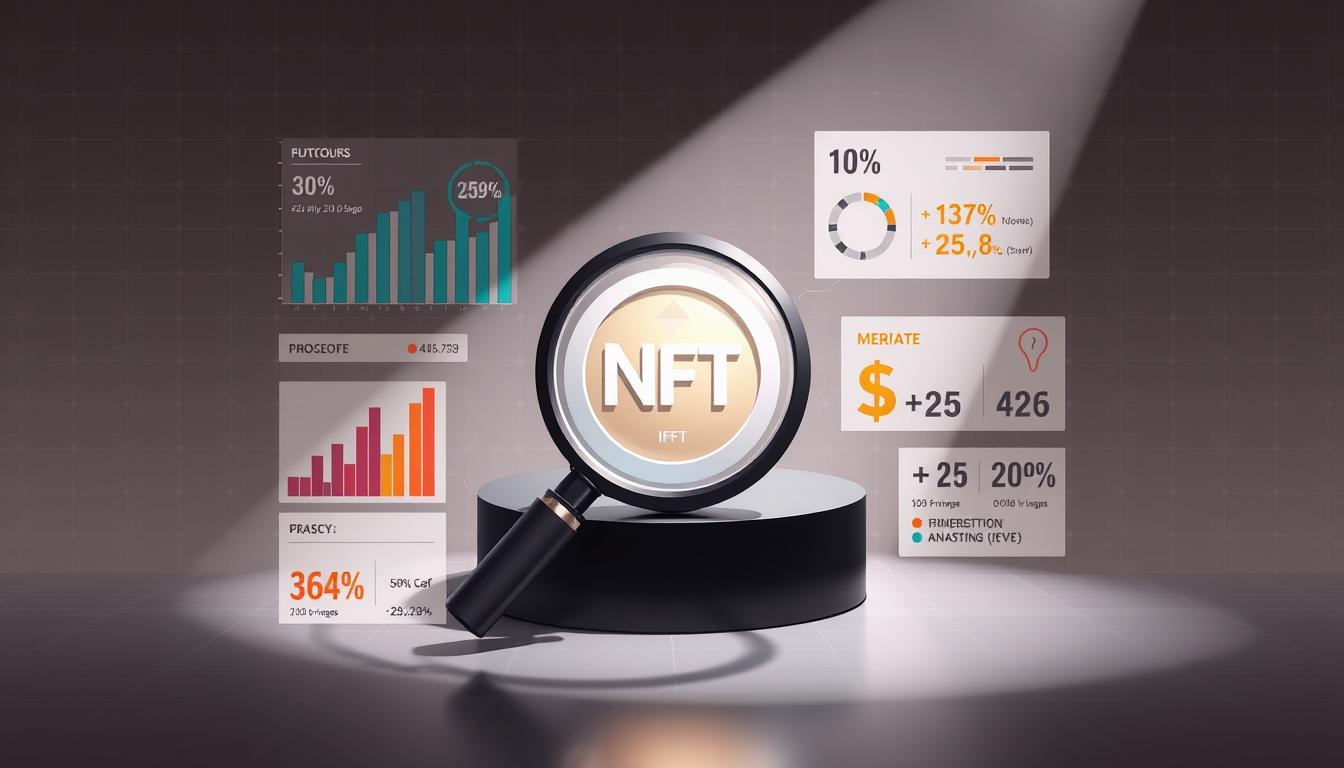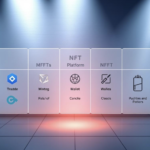Now Reading: Proof of Stake Consensus Mechanism Explained Simply
- 01
Proof of Stake Consensus Mechanism Explained Simply
Proof of Stake Consensus Mechanism Explained Simply

Blockchain networks rely on innovative protocols to validate transactions securely. One groundbreaking approach, known as PoS, has emerged as a sustainable alternative to older systems. Instead of requiring massive computing power, this method uses participants’ financial commitments to maintain network integrity.
In PoS-based systems, users lock up cryptocurrency as collateral to become validators. These validators are randomly selected to confirm blocks of transactions, earning rewards for honest behavior. This structure creates strong economic incentives to follow the rules, as malicious actions could result in losing staked funds.
The shift toward PoS gained momentum when Ethereum adopted it in 2022. This transition highlighted the protocol’s ability to reduce energy consumption by over 99% compared to traditional methods. For developers and investors, understanding this technology is now essential in navigating modern decentralized networks.
Key Takeaways
- PoS replaces energy-intensive mining with staked cryptocurrency to secure blockchains
- Validators are chosen based on their financial stake in the network
- Ethereum’s 2022 upgrade demonstrated real-world viability for large-scale adoption
- Economic incentives drive network security more effectively than computational power
- Understanding staking protocols is crucial for blockchain participation and investment
Introduction to Proof of Stake: Origins and Significance
Digital systems require reliable methods to agree on data accuracy. For blockchain networks, this agreement process – called consensus – ensures all participants verify transactions uniformly. Without it, decentralized ledgers couldn’t maintain trust or prevent fraud.
Blockchain Basics and Agreement Protocols
A blockchain acts like a shared notebook updated across thousands of computers. Each page (block) lists recent transactions, but adding entries demands group approval. Early systems used Proof of Work (PoW), where miners solved puzzles to validate blocks. This process secured networks but demanded staggering energy – Bitcoin’s annual usage rivals Thailand’s electricity consumption.
From Energy-Intensive to Eco-Friendly Systems
The search for sustainable alternatives began as mining costs and environmental concerns grew. Developers envisioned a model where financial commitment, not computing power, would secure networks. This shift gained traction when Ethereum announced its staking-focused upgrade, setting the stage for modern protocols.
| Feature | Proof of Work | Proof of Stake |
|---|---|---|
| Energy Use | Extremely High | Minimal |
| Hardware Needs | Specialized Mining Rigs | Standard Computers |
| Security Method | Computational Puzzles | Financial Collateral |
This evolution addressed PoW’s limitations while maintaining network security. Validators now stake cryptocurrency instead of burning electricity, creating greener blockchain operations. Major platforms adopting this approach proved its viability for large-scale use.
Proof of Stake Consensus Mechanism Explained: How It Works
Modern blockchain platforms achieve agreement through innovative validation methods. At their core, these systems use financial commitments instead of energy-intensive computations to secure transactions. This approach aligns user incentives with network health through measurable contributions.

Staking: Locking in Value as Collateral
Staking requires users to lock cryptocurrency in designated wallets. This acts as security deposit, ensuring participants act honestly. Networks like Ethereum demand 32 ETH per validator, creating substantial skin in the game.
| Platform | Minimum Stake | Selection Criteria |
|---|---|---|
| Ethereum | 32 ETH | Random weighted by stake size |
| Cardano | ₳500 | Stake pool delegation |
| Polkadot | DOT 1.0 | Nominator-backed validators |
Role of Validator Nodes in Network Security
Validator nodes perform three critical tasks when chosen. First, they bundle transactions into blocks. Second, they verify others’ proposed blocks. Finally, they broadcast confirmed data across the network.
Selection algorithms favor larger stakes but maintain randomness to prevent centralization. This balance ensures no single entity dominates block creation. Nodes risk losing staked tokens for malicious actions, creating self-policing security.
To become a validator, users install network software and meet hardware requirements. Most systems need always-online machines with stable internet. Rewards come from transaction fees and new token issuance, proportional to stake size.
Validator Nodes, Staking, and Economic Incentives
Network security in modern blockchain systems relies on carefully designed reward-penalty structures. Participants commit digital assets to gain validation rights, creating a self-sustaining ecosystem where financial interests align with protocol rules.

Understanding Validator Selection and Rewards
Ethereum’s algorithm prioritizes users holding at least 32 ETH when choosing block proposers. Larger stakes increase selection chances, but randomness prevents centralized control. Successful validators earn rewards through:
- Newly minted coins (up to 8% annual yield)
- Transaction fees from processed blocks
- Network participation bonuses
| Platform | Minimum Stake | Annual Yield |
|---|---|---|
| Ethereum | 32 ETH | 4-8% |
| Cardano | ₳500 | 3-5% |
| Polkadot | 1 DOT | 14% |
How Slashing Ensures Honest Participation
Systems automatically penalize validators for harmful actions through slashing. Common violations include prolonged downtime or approving fraudulent transactions. Penalties range from partial stake loss to complete fund confiscation.
In 2023, Ethereum slashed $3.5 million worth of ETH from validators who double-signed blocks. This enforcement mechanism maintains network reliability while allowing participants to calculate risk versus potential rewards.
Energy Efficiency and Scalability Benefits
The environmental impact of digital systems has become a critical concern for tech innovators. Staking-based protocols address this challenge by eliminating energy-intensive mining operations. Unlike traditional methods, these systems validate transactions through financial commitments rather than computational races.

Reduced Environmental Impact Compared to PoW
Ethereum’s 2022 upgrade showcases the transformative power of modern validation methods. The network slashed its energy use by 99.95% overnight – equivalent to removing Denmark’s annual electricity consumption. This shift occurred because validators no longer solve complex puzzles requiring specialized hardware.
| Feature | Proof of Work | Proof of Stake |
|---|---|---|
| Annual Energy Use (Ethereum) | 112 TWh | 0.01 TWh |
| Hardware Cost | $10,000+ mining rigs | $500 standard PCs |
| Transactions/Second | 15-30 | 100,000+ (post-upgrade) |
Reduced power demands enable networks to scale efficiently. Without energy-guzzling mining farms, systems allocate resources to transaction processing. Ethereum now handles 100x more activity while using less electricity than 2,000 US households.
Users experience faster confirmations and lower fees during peak times. Developers can build complex applications without network congestion concerns. These improvements make blockchain technology viable for global payment systems and enterprise solutions.
Security remains robust despite lower energy costs. Validators risk financial penalties for dishonest actions, creating stronger incentives than hardware investments. This balance proves environmental sustainability and network protection aren’t mutually exclusive goals.
Comparing PoS with Proof-of-Work Models
Modern validation approaches differ fundamentally in how they prioritize network resources. While older systems burned energy to prove trustworthiness, newer models leverage financial commitments to achieve similar goals.
Energy Expenditure vs Financial Commitment
Proof work systems require miners to solve cryptographic puzzles through trial-and-error computing. Each Bitcoin block demands ~150 quintillion hash attempts, consuming more power than some nations. This “brute force” method secures networks but creates sustainability challenges.
| Aspect | PoW | PoS |
|---|---|---|
| Resource Used | Electricity | Staked Assets |
| Validation Speed | ~10 minutes/block | ~12 seconds/block |
| Entry Cost | $10k+ hardware | Network minimum stake |
Staking-based systems flip this model. Validators risk existing assets rather than burning new energy. This shift enables faster transactions while using 99% less power, as shown in our comparison of PoW and PoS systems.
Attack Prevention Strategies Compared
Both models face 51% attack risks but require different attacker strategies. Overpowering PoW demands controlling majority computing power – feasible through cheap electricity regions. Compromising PoS requires owning most staked coins, which would crash the asset’s value during acquisition.
Real-world data shows PoW networks suffer ~5 attacks annually versus 0 successful PoS breaches. Financial disincentives prove more effective than energy barriers in practice. Networks automatically slash malicious validators’ stakes, creating instant penalties absent in mining systems.
Future Implications: Advancements and Updates in PoS Technology
Emerging technologies are reshaping how decentralized systems handle growing demands. Developers now focus on enhancing speed and capacity while maintaining security. These improvements aim to support global adoption across industries.

Upcoming Innovations and Network Scalability Solutions
Major platforms like Ethereum plan to implement sharding – splitting networks into parallel chains. This upgrade could process 100,000 transactions/second by 2025. Layer-2 solutions already boost speeds through off-chain processing:
- Cardano’s Hydra protocol enables instant micropayments
- Polygon reduces Ethereum gas fees by 90%
- Solana combines PoS with timestamp verification
Hybrid models gain traction, blending PoS with novel mechanisms. Tezos allows token holders to delegate voting rights without losing custody. Polkadot’s relay chain connects specialized blockchains, creating an internet of interoperable networks.
Anticipated Market and Regulatory Impacts
Governments now scrutinize staking rewards as taxable income. The SEC’s 2023 guidance classifies some cryptocurrency staking services as securities offerings. This shift impacts platforms offering automated staking strategies.
Institutional adoption grows as energy-efficient networks align with ESG goals. BlackRock’s 2024 report predicts 60% of new blockchain projects will use PoS variants. Market analysts forecast $500 billion in staked assets by 2026, driven by protocol developments.
Challenges remain in achieving true decentralization. Large stakeholders currently control 40% of major networks’ voting power. New consensus models aim to balance influence between small and large participants.
Final Thoughts on Proof of Stake and Its Growing Impact
The crypto ecosystem continues evolving with sustainable solutions reshaping transaction validation. PoS stands out as a pivotal innovation, balancing network security with environmental responsibility through its unique stake-based approach.
This system transforms how blockchain networks operate by aligning user incentives with platform stability. Validators maintain integrity through financial commitments rather than energy waste, enabling faster processing of transactions at lower costs.
Adoption rates skyrocket as major platforms demonstrate real-world viability. Over 25% of circulating ETH now supports network operations through staking wallets, creating self-reinforcing security. Participants earn rewards while contributing to decentralized governance models.
Future developments will likely enhance scalability through sharding and layer-2 solutions. These upgrades could make crypto transactions as seamless as digital payment apps while maintaining robust security protocols.
For newcomers and veterans alike, understanding staking mechanics remains crucial. As more coins transition to eco-friendly validation, informed participation unlocks both financial opportunities and technological influence in this evolving space.















